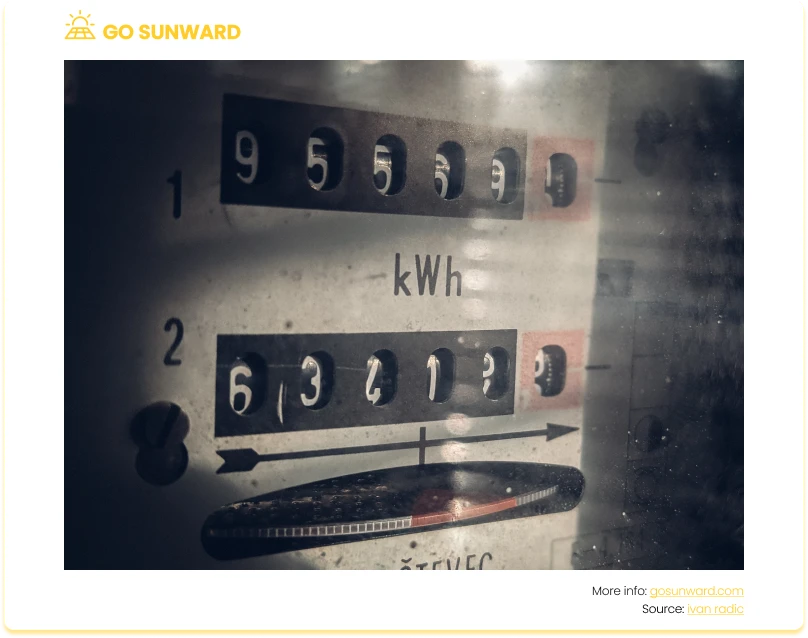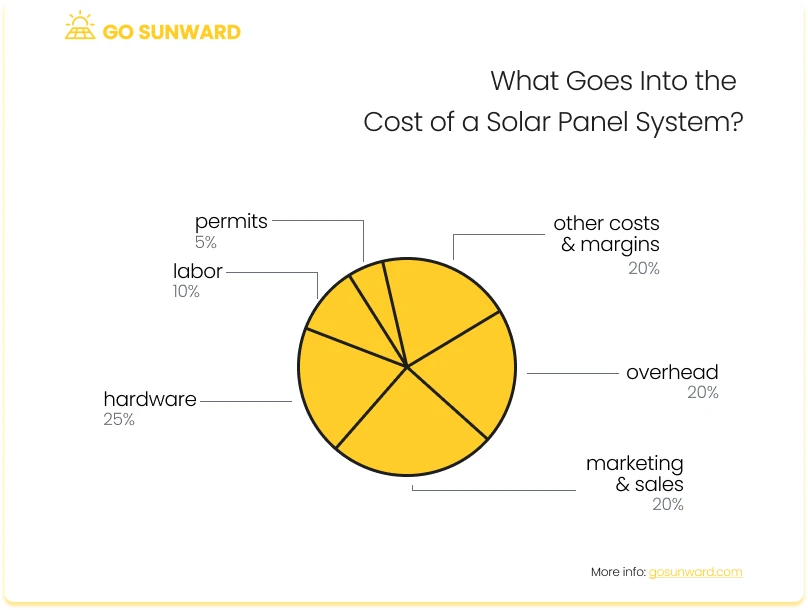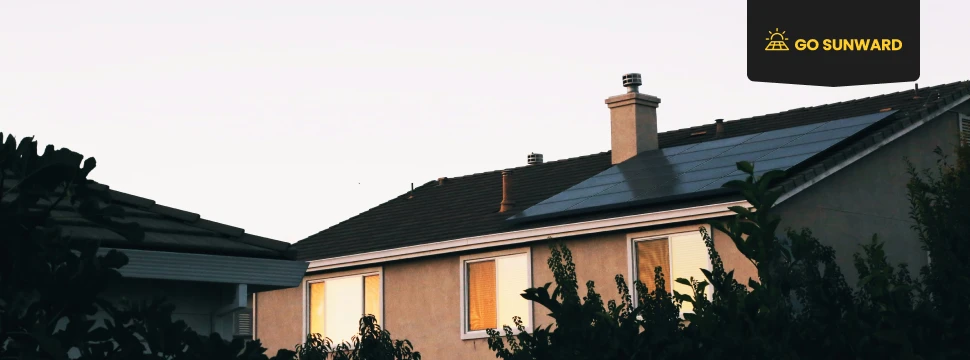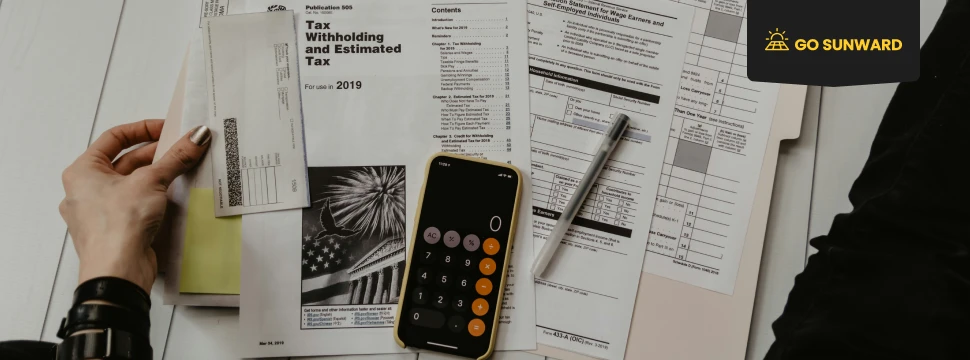How Many Solar Panels Would You Need To Run A House?
As solar power gains popularity in the United States due to its potential to reduce electricity costs and improve environmental stewardship, many homeowners are actively considering it as a sustainable alternative to traditional power sources. This article aims to demystify residential solar panels, exploring critical aspects of solar energy. We’ll answer questions that often arise: How many solar panels would you need to run a house? What factors play a role and what are the costs involved? Our goal is to provide practical insights and guidance, empowering you to make informed decisions about solar panel installation in your home.
Here are some examples of other research pieces we’ve done to help you get started with Solar:
Want to see how many solar panels you would For 1000 kWh Per Month?
What do you think? Can Solar Fully Power a House?
How Many Solar Panels Would You Need To Run A House? The Must-Have Info
So ‘How Many Solar Panels Would You Need To Run A House?’. A reputable solar installer can answer this question for you. Still, it’s good to get an estimate of costs in advance or double-check the installer’s calculations. This is where this article can help, as it will guide you through the process step-by-step.
First things first, you need to gather some crucial information. To determine the required number of solar panels you would need to run a house, you should have information on the following:
- Your average energy consumption.
- Your current energy usage in watts.
- The local climate and sunlight availability.
- The efficiency rating of the solar panels you’re thinking of using.
- The physical dimensions of the solar panels you’re considering.
Once you have this information, you are well on your way to calculating how many solar panels you will roughly need to power your home. This will also enable you to go on and estimate costs and the financial feasibility for your household.
Step 1: Working Out Your Energy Usage
Calculating your average energy requirements involves determining how much electricity your household typically consumes over a specific period, often monthly or annually. You can usually locate consumption information on your existing utility bills. Look out for data measured in kilowatt-hours (kWh), it will be somewhere on your electricity bill.

For our calculations, we need daily and hourly usage data. If your bill lacks a daily average, simply divide the monthly or annual average by 30 or 365 days, respectively. Afterwards, divide this result by 24 to work out your hourly average electricity consumption.
As a reference point, an average home in the US consumes about 900 kWh per month, which equates to roughly 30 kWh per day or 1.25 kWh per hour. Of course, the average electricity usage of US households can vary widely significantly, based on factors such as the size of the house, the region it’s located in, the efficiency of appliances, and the local utility rates. As a case in point, in 2021, Louisiana recorded the highest yearly electricity consumption of any state in the US, with 14,302 kWh per residential customer, while Hawaii had the lowest at 6,369 kWh per residential customer.
Your target daily average energy usage serves as a benchmark for calculating your solar needs. It represents the number of kilowatt-hours your solar system should generate to cover a significant portion, if not all, of your electricity requirements.
Keep in mind that energy consumption can vary throughout the year due to factors like weather and heating or cooling needs. If you want a more accurate estimate, calculate averages for different seasons separately. Furthermore, you need to consider any anticipated changes in your energy consumption, such as home upgrades, energy-efficient appliances, or lifestyle adjustments, when estimating your average energy requirements for the future.
Solar panels don’t maintain peak efficiency around the clock, and many external factors can temporarily affect solar panel efficiency (such as location, panel angle, temperature, dust and dirt levels and system design – for more information on efficiency, click here). Therefore, to account for these fluctuations, our research suggests including a 25% “buffer” in your daily energy target to ensure you can consistently produce the required solar energy from your panels.
Step 2: Review Your Local Climate & Sunlight Availability
The number of peak sunlight hours directly influences the energy output of your residential solar system. In a 24-hour cycle, the typical American roof benefits from approximately four hours of “full” or “usable” sunlight each day. Of course, this duration may fluctuate significantly depending on your location, whether you reside in a sun-soaked desert or amidst misty mountain terrain. The National Renewable Energy Laboratory (NREL) offers comprehensive access to a wealth of renewable energy resource information via a range of tools, maps, reports, and data collections, which will help you assess your sunlight availability.
You then need to convert your hourly energy consumption (as discussed in step 1) into watts by multiplying it by 1,000. Then, divide your average hourly wattage requirement by the daily peak sunlight hours in your area. This calculation reveals the hourly energy production target for your panels. For instance, an average U.S. home (using 900 kWh/month) in an area with five daily peak sunlight hours would necessitate a 6,000-watt system.
Step 3: Work Out Solar Panel Wattage & Efficiency
Understanding the connection between panel wattage and efficiency is crucial when determining the size and capabilities of a solar panel system or solar array, which is part of the overall process of evaluating the feasibility of installing solar panels on a property.
Solar Panel Efficiency:
- Efficiency refers to the ability of a solar panel to convert sunlight into electricity. It is expressed as a percentage and represents the portion of sunlight energy that the panel can capture and convert into electrical power.
- Higher efficiency means that a solar panel can convert a greater percentage of the sunlight it receives into electricity. For example, a solar panel with 20% efficiency converts 20% of the sunlight into electricity, while the rest is lost as heat or other forms of energy.
- Currently, solar panel efficiency typically hovers around 18%-20% on average. However, this figure can fluctuate depending on a variety of factors.
Solar Panel Wattage:
- Wattage or power output is a measure of the actual electrical power a solar panel can produce under specific conditions. It is typically measured in watts (W) or kilowatts (kW).
- Manufacturers must provide panels with a label indicating their kilowatt-hour output per hour under ideal conditions, specifically when exposed to direct sunlight on a clear, cloudless day. This label corresponds to what is known as a Standard Test Condition rating (STC).
- For instance, a panel may bear an STC rating of 300, signifying its capacity to generate 300 watts of power in such conditions.
- A solar panel’s wattage is determined by the surface area of the panel, the efficiency of the solar cells it contains, and the intensity of sunlight it receives.

The quality of your solar panels plays a significant role here. Solar panels can vary widely in their performance and characteristics. Photovoltaic (PV) solar panels, commonly used in residential setups, come in a range of wattages, typically spanning from 150 watts to 370 watts per panel. This variation depends on factors such as panel size, efficiency, and the underlying cell technology.
Given these substantial disparities in quality and efficiency, it’s challenging to provide a one-size-fits-all recommendation for solar panels or the quantity needed for your home. The key takeaway is that panels with higher efficiency generate more wattage, potentially reducing the number of panels required to achieve the same energy output. Typical solar panels generally produce around 250 watts each, with varying efficiency levels.
Step 4: Assess Your Solar Panel Size
When dealing with a small or irregularly shaped roof, the size and quantity of solar panels become crucial factors. If you have ample roof space available, you may consider opting for larger panels, even if they are slightly less efficient, as they often come at a lower cost per panel. This approach can help you reach your desired energy production levels.
Conversely, if your usable roof area is limited or partially shaded, it may be more beneficial to use smaller, high-efficiency panels. This strategy maximizes long-term power generation potential, leading to greater cost savings over time.
Regarding solar panel dimensions, typical residential panels today measure approximately 65 inches by 39 inches, equivalent to 5.4 feet by 3.25 feet, with slight variations among manufacturers.
Step 5: Final Calculations
You can calculate how many solar panels would you need to run a house by multiplying your household’s hourly energy requirement (in watts) by the peak sunlight hours for your area and dividing that by a panel’s wattage. In other words:
Number of Panels = (Hourly Energy Requirement in watts x Peak Sunlight Hours) / Solar Panel Wattage
While this calculation looks simple enough, it is important to understand that the solar system is not entirely efficient in this conversion process (as highlighted above!). Therefore, when discussing a potential solar installation with a company, it’s likely they’ve already factored in a 20% ‘cushion’ or ‘buffer’ to provide a more realistic estimate.
While it is beneficial to work out solar panel estimates yourself, seeking professional assistance and guidance for solar installation estimates and costs is crucial to providing accurate assessments of your energy needs, evaluating your property’s solar potential, and designing an optimized system. They consider factors like shading, panel placement, local regulations, and equipment efficiency to ensure your installation complies with standards and operates efficiently.
Professionals also help navigate financial incentives, such as tax credits and rebates, which can significantly reduce upfront costs. Their recommendations for high-quality equipment and proper installation techniques enhance long-term reliability and performance.
What Are The Typical Costs Of Installing A Solar Panel System To Power A House?
Installing a solar panel system to power a house can be a significant investment, but the long-term benefits and savings can make it a worthwhile pursuit. The cost of installing a solar panel system can vary depending on a range of factors, including the size of the system, permitting involved, hardware costs, labor and financing.

The size of the solar panel system is one of the most significant cost factors. But hopefully this article has equipped you with the knowledge to find out the rough number of panels you will need to meet your household’s needs.
Equipment costs can vary significantly and account for a large proportion of overall solar panel installation costs.
- Solar Panels: The solar panels’ cost varies based on their quality, efficiency, and brand. High-efficiency panels are usually more expensive but can generate more electricity in less space.
- Inverters: Inverters are needed to convert the direct current (DC) generated by the panels into usable alternating current (AC) for your home. The type and quality of inverters affect the cost.
- Mounting and Racking: The hardware used to secure the panels to your roof or ground-mounted system has associated costs.
- Batteries (Optional): If you want to add energy storage for backup power or off-grid capabilities, batteries like lithium-ion batteries can significantly increase costs.
The labor costs for installing the solar panels can vary by location and installation complexity. Labor includes system design, permits, panel installation, and electrical work. You also may need permits and inspections from your local authorities, and these can come with fees. Furthermore, depending on your home’s electrical system, you may need to upgrade or modify it to accommodate the solar panel system.
Some utilities charge connection fees or require specific meters for solar installations. However, many regions offer net metering, allowing you to sell excess electricity back to the grid.
Solar panels are generally low-maintenance, but you should budget for occasional cleaning and possible inverter replacement during the system’s lifespan.
Financing costs are also relevant. If you finance your solar installation through a loan or lease, there may be interest charges or lease fees. You may also need to adjust your homeowner’s insurance to cover your solar installation against damage or other risks. Extended warranties on equipment can add to the overall cost but provide peace of mind.
Some homeowners opt for system monitoring services, which can add to the overall cost but provide real-time data on your system’s performance.
Overall, the cost of a solar panel system can vary from a few thousand dollars for a small residential system to tens of thousands of dollars for a larger, high-efficiency system with energy storage. On average, in the United States, a typical residential solar panel installation might cost between $15,000 to $25,000 before incentives and rebates. However, this cost can be significantly lower with incentives and can vary based on regional factors and individual circumstances.
How Long Does It Take To Install Solar Panels To Power A House?
Installing enough solar panels to power a house is not a quick process, as it requires careful planning and execution. Several factors come into play when determining the timeframe for installation, including the size of the house, the amount of electricity needed, the efficiency of the solar panels, and the complexity of the installation.
The installation process typically involves several stages, including site assessment, system design, permit acquisition, panel procurement, and actual installation. The duration of each stage can vary based on factors such as local regulations and availability of equipment and personnel. On average, the entire process may take anywhere from a few weeks to a few months. For more detailed information on the process, click here.
Delays can occur due to factors such as permitting, equipment procurement, and inspection schedules, so it’s essential to start the process well in advance and work with experienced professionals to ensure a smooth installation.
Conclusion
In conclusion, residential solar panels have become an increasingly viable and sustainable option for powering homes. This article has shed light on the fundamental aspects of solar energy, addressing common questions that homeowners often grapple with: the number of panels needed, the influential factors and the associated costs.
By delving into these key considerations, we’ve aimed to demystify the world of solar energy. Our objective has been to equip readers with valuable insights and knowledge, enabling them to make well-informed decisions when it comes to harnessing the power of the sun to meet their household energy needs and determine how many solar panels would you need to run a house?
As we move towards a future that prioritizes renewable energy sources, embracing solar panels not only benefits individual homeowners but also contributes to a more sustainable and decarbonised world. With a clearer understanding of the solar panel installation process, we hope that you are now better prepared to embark on your own solar journey and make a positive impact on both your energy bills and the environment.




